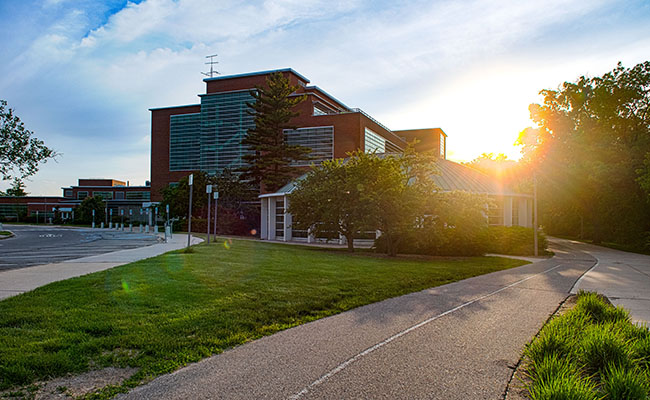The story behind the 5th year teacher preparation program at MSU
By Chris Reimann

The 2023 edition of the New Educator includes a story on the shift in the Teacher Preparation Program in the College of Education from a five-year program to a four-year program. The story may have prompted some readers to wonder, how did the five-year program come about in the first place?
Big changes – and a shift from a four-year program to a five-year program was a huge shift – do not happen casually or quickly, and the five-year program was no exception. What follows is a brief summary of the thinking and efforts that went into its creation. Readers interested in more of the history of the program and the college during the 1980s and 1990s are directed to “What Would It Take to Make an Ed School Great? Voices from an Unfinished Revolution,” by MSU College of Education Professor Emeritus John Schwille (2023, Michigan State University Press).
The quality of the nation’s education system became a topic of heightened national visibility during the 1980s, but it was already long a topic of research within the MSU College of Education. During this period Dean Judith Lanier was able to attract and hire innovative scholars who questioned much of the prevailing wisdom on what constitutes effective teaching and how best to prepare teachers for the changing realities of schools and society.

In particular, MSU was a pioneer in research not just on what makes good teaching, but also on what makes for good teacher education, including the initial preparation of teachers. Besides a very large traditional preparation program, faculty in the college had developed four alternative preparation programs to try out progressive notions such as experience in local classrooms early in the program. Dean Lanier and others in the college felt the mainstream preparation program could benefit from the innovations being developed in the alternative programs. These programs included coherent sequencing of courses and teams of faculty that worked with the same cohort of students over extended periods rather than just for one quarter.
Yes, quarters: At the time MSU, was still on the fall-winter-spring-summer quarter system, but the university was about to shift to the fall-spring semester system. This meant that the curriculum for every course in every department in every college across the university needed to be revised. This was a perfect opportunity to revise the entire Teacher Preparation Program to align with a new vision for teacher preparation.
Of course, these changes in the preparation of teachers in the College of Education and across MSU were not happening in a vacuum.
“States were beginning to increase their continuing professional development requirements for teachers,” observed Robert Floden, University Distinguished Professor Emeritus and former dean of the college.
Dean Lanier wanted nothing less than to promote teaching as a profession along the lines of medicine or the law, so she assembled fellow deans from many of the country’s prominent schools and colleges of education to form the Homes Group, a consortium of institutions with the aim of transforming the nation’s approach to the preparation of teachers and to their professional growth once in practice.
Lanier had also arranged for the eminent educator Harry Judge from Oxford University to spend a year at MSU. Judge was the architect of the Oxford Experience in the United Kingdom that included a five-year program with an internship year that culminated in graduate certification. Michael Sedlak, associate dean emeritus, and Professor Lynn Paine authored a book on comparative education based on an examination of preparation of teachers in three countries that provided additional support for the new approach. Sedlak described the three pillars of the new approach: Stronger content knowledge, more rigorous preparation in pedagogy, and an internship year to provide substantial experience in working in schools.
“Faculty realized that we couldn’t do everything we wanted to do to prepare candidates in four years,” said Sedlak.
Revising the curriculum within the college was in itself a significant endeavor: intellectually, shorter courses needed to be combined or completely recast, and learning progressions across courses needed to be identified and justified to college and university review committees. Politically, college leaders needed to convince faculty of the merits of teaching well-established content differently or new content altogether. And because the preparation of teacher candidates includes disciplinary coursework in other colleges as well, College of Education leaders spent a year in extended conversations across campus promoting the new approach. After that, college leaders needed to convince the State Board of Education to allow the new approach as an experimental program.
“It represented a change to 60 years of traditional requirements” in state certification, explained Sedlak.
Fortunately, the new approach became extremely popular with school districts. The year-long internship meant that graduates were much better prepared for the realities of the classroom than their peers at other institutions.
“Districts would ask us, ‘why don’t you send us more interns?’” observed Floden.
“We were turning students away,” he continued. “Of course, tuition was lower then, and teacher salaries were relatively higher, too.”
In surveys, graduates of the program indicated strong agreement that they were well prepared for the work they were doing.
The shift to the five-year program took place during market conditions of high demand for new teachers and a high supply of students interested in obtaining a teaching certificate so valued by the K-12 sector.
“We had districts from around the nation coming to our job fairs with contracts in hand, to hire graduates on the spot,” said Sedlak.
During the past decade, market shifts from both the district side and the student side have prompted the College of Education to reevaluate how best to fulfill MSU’s land grant mission of meeting the needs of the state and its citizens. The new teacher preparation is stronger for the innovations and advances made during the five-year program era.




